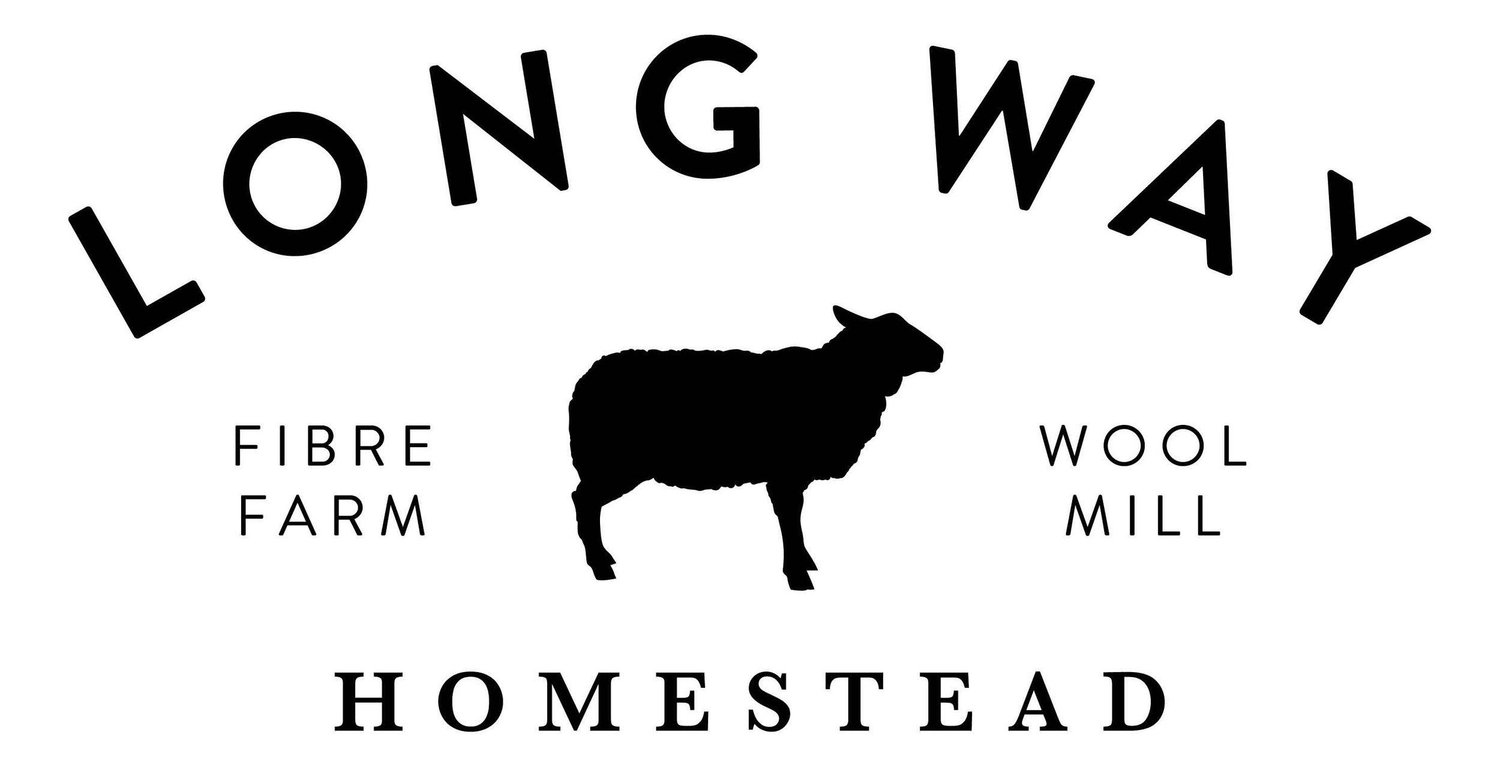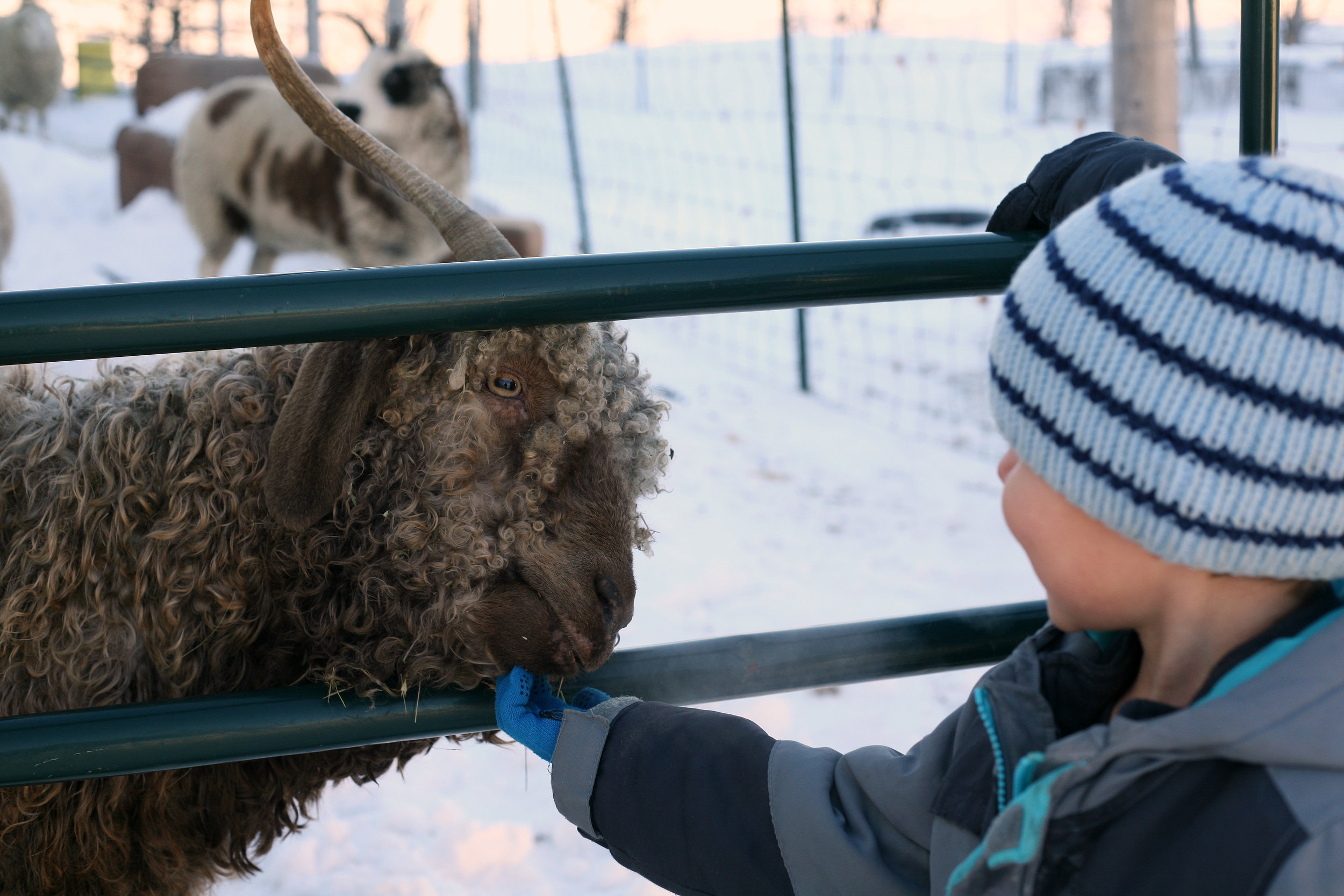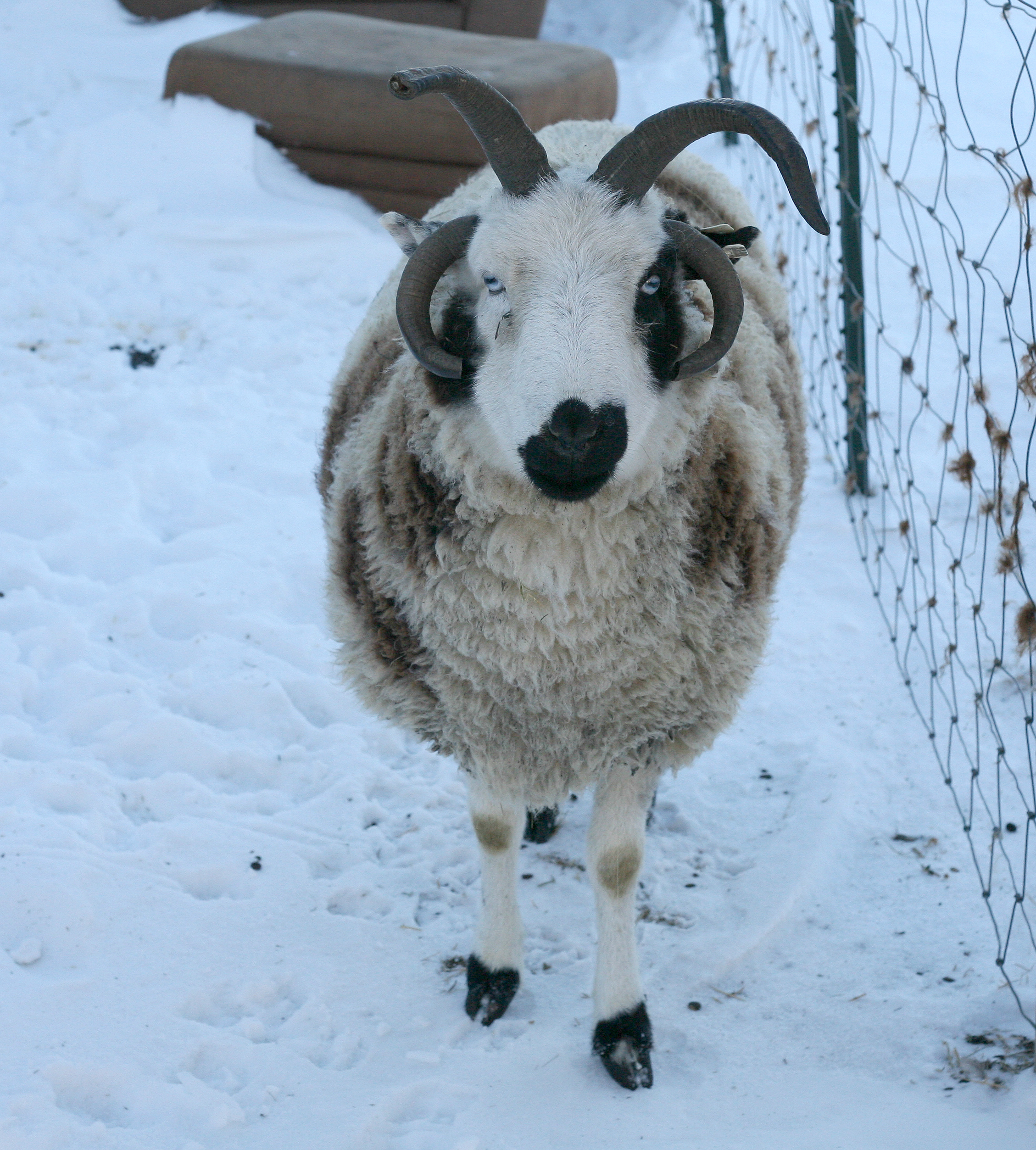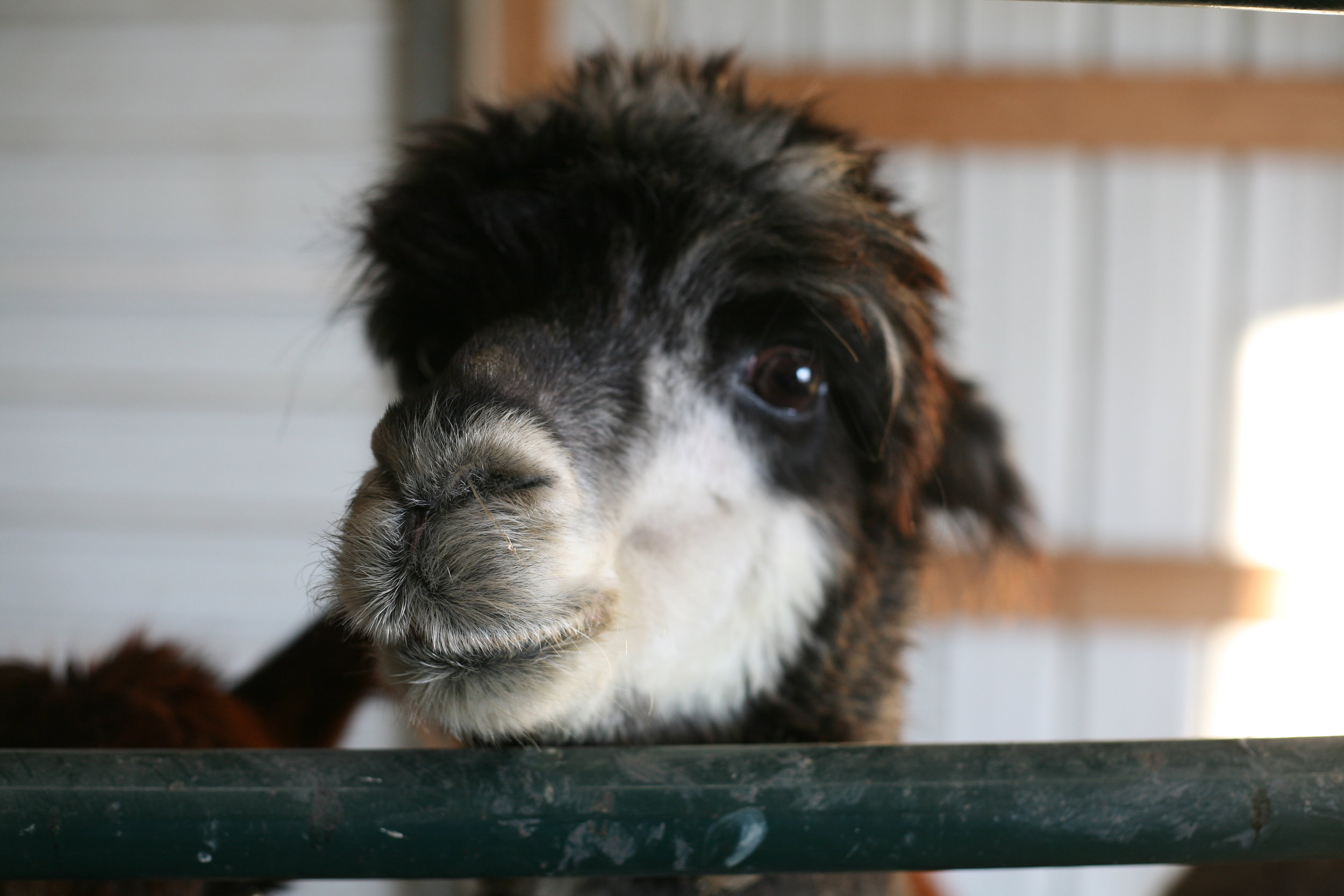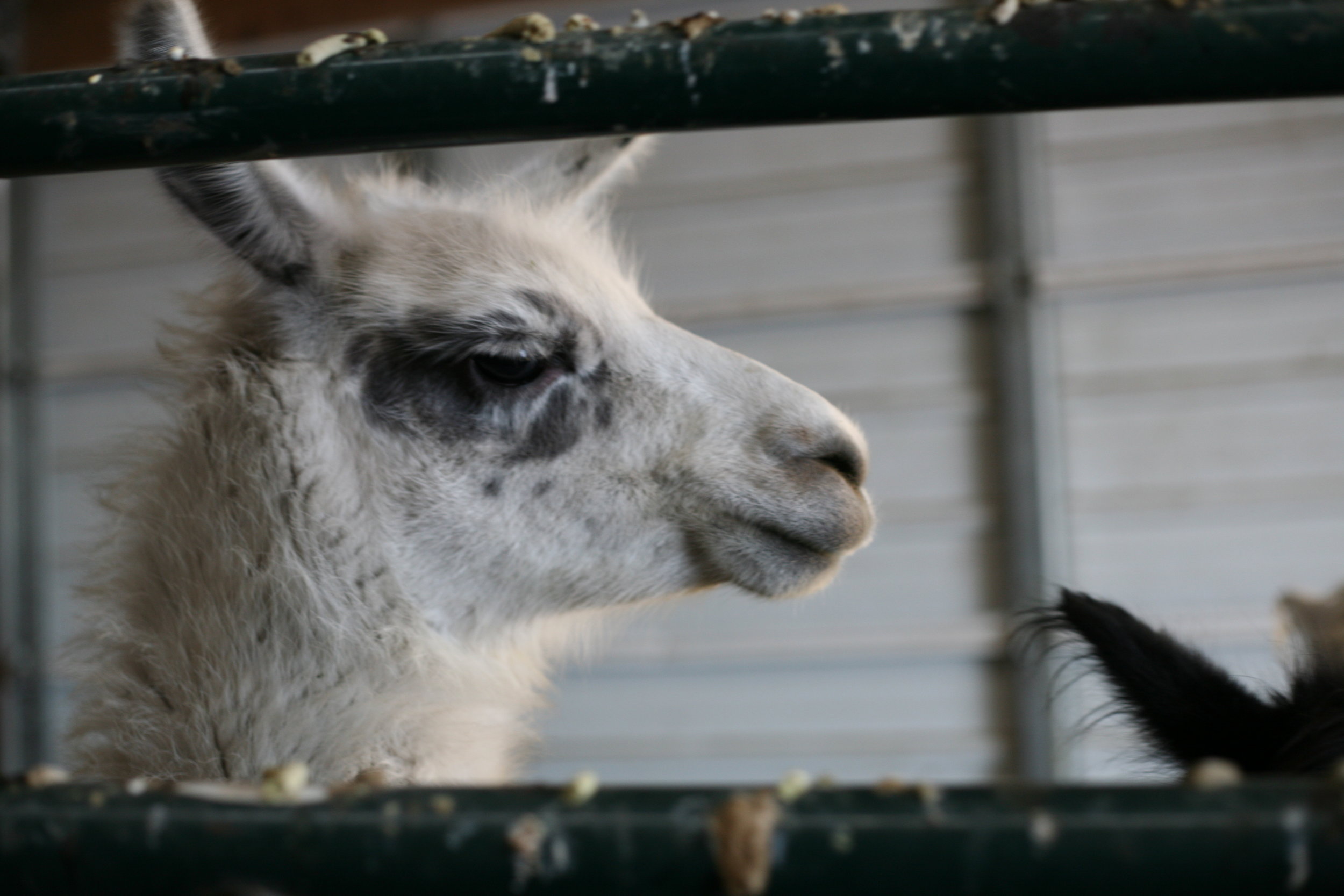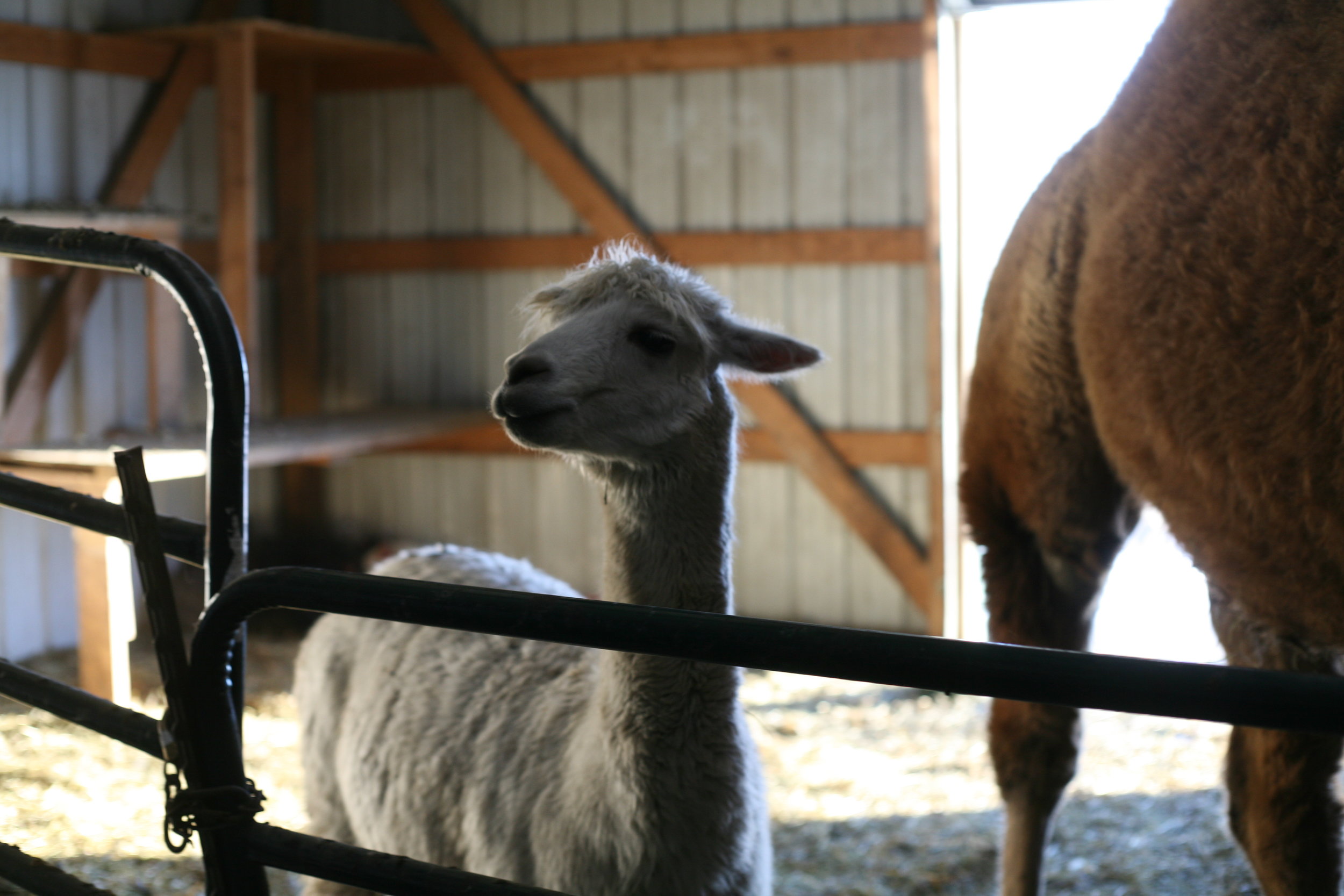I've said it before but I'll say it again: Llamas are weird.
And horny teenage llamas? Flat out ridiculous.
We got our boy llama, Leo, earlier this summer, and he was perfect. Healthy, easy going (for llamas this means not totally insane), and very protective of the herd.
Then I guess his hormones kicked in and all he wanted to do was get with the sheep.
Luckily the sheep were way faster than him. And Leo has the coordination of a baby giraffe tumbling around a cement mixer, so they weren't in too much danger. But still...that's some messed up stuff going on out there. And I had to watch it everyday as I was trying to eat my breakfast.
Our options were either get him snipped or find him a girlfriend. Getting him castrated would cost like 250 bucks, and female llamas were going for around 300.
So why put him through an operation when for a few extra bucks we could get him some company? And then...baby llamas, right? Win/win.
Anna found a female llama for sale nearby. We brought her home and our boys named her Donnie, short for Donatella. Because we're still letting our kids name the animals, and they're really into Ninja Turtles. (It was that or Michaelanga or Raphaela. So Donnie it is).
Donnie in her new home!
Donnie's a beaut. An all black female, fully mature. Raised on a farm of only female llamas. So an amazon llama of sorts. Leo would be her first encounter with a male of her species.
He made a horrible first impression.
When she arrived he was chasing the sheep around the tall grass like a deranged Muppet. It wasn't going well for him, and also he looked terrible doing it.
With that going on in the background we showed Donnie around her new place.
Now, this is the fourth llama we've brought to the property and she was by far the most docile. She causally checked out the feeder, the shelter, and the fences. Occasionally she paused to nibble apple slices from our hands. A real lady.
Then Leo noticed her.
He was panting, out of breath from another failed attempt at hybridization. But when he looked over at her he just froze.
You could actually see cartoon hearts pop out his eyeballs as he stood there blinking his long goofy white eyelashes in disbelief.
Then he strutted over to Donnie and started making this weird mating call, which can only be described as “pathetically horny.”
Think Beavis and Butthead chuckling, mix in a little Seth Rogen, release helium, and you've got the mating call of the adolescent llama. It's bonkers.
The courtship....
He started making that noise, then never stopped. It just became ambiance.
I'd walk out to the shop and I'd hear llamas mating. I'd go check for eggs and I'd hear llamas mating. I'd be working on the house and I'd hear llamas mating.
Those llamas did it 24/7 for about two and half months.
Then one day I saw Donnie do something I'd never seen a llama do before. She spit at him.
Now I understand they're camelids and this is what they do, but none of our llamas had ever spit before. Plus I was surprised by the sheer force of it.
Leo tried going for it again and she just spun her neck around like a cobra and gave him three sharp blasts to the face. He got the message and backed off.
Back at the house I told Anna what just happened.
“I think Donnie's pregnant.” I said.
“Why do you say that?” she asked.
“She's done messing around.”
“Maybe she's just tired of him.”
“Maybe she is. But I'm going to mark it on the calendar anyway.”
And that was that. For a while.
Then our sheep went into heat again and Leo went back to being his old cross-breeding self.
So we called the vet. He said he'd make a house call to come fix our llama.
“What do you need?” I asked over the phone.
“Oh, you know, we should be good,” he said. “...if you've got an extension cord that will reach, that would be nice. A bucket of warm water, maybe a couple of bales of hay. That should do it.”
So with those basics of farm surgery lined up, we got right too it.
I pinned Leo to the side of the shelter and we gave him a shot of tranquilizer. (By the way, this is my main job on the farm – animal tackler. I take great pride in it. Lately I've been able to do some sweet, mid-air takeouts of even our flightiest sheep. They used to elude me, but not anymore. Now I'm inside their heads. Game over, ungulates.)
Hug-restraining a 200 pound llama as it starts going unconscious is a pretty goofy experience. Within moments you switch from grappling a frightened animal to snuggling a couch sized teddy bear.
Finally Leo went completely slack and we rested him on the bedding of the shelter. The vet propped up Leo's hind quarters and got to work.
Anna was holding his tail and I was cradling his head so he wouldn't choke while under. I couldn't really see what was going on.
“Do you really want to?” Anna asked.
“Well, kind of. Yeah.”
“We could switch. You could hold his tail.”
I didn't tell her at the time, but I had this fear of him violently ejecting feces while unconscious, so I declined. Besides, if I craned my neck a bit I could see everything the vet was doing.
This wasn't our first time sterilizing animals. Last spring Anna and I elastrated three lambs. (Elastration is when you snap a band around an animals testes. Then after sufficient time/blood loss its balls “painlessly” fall off. That's what the propaganda states, anyway.)
I hated elastrating. Watching those little dudes trying to shake off a rubber band they couldn't get to was awful. I was wincing and walking funny after each procedure.
But this time it was all surgical. Poke, slit, clamp, tie, snip - done.
Afterward, Anna had to snuggle with Leo to keep his head up while he came around from the drugs. I brought her a coffee and she spent about an hour cradling four feet of groggy llama neck. It was the most one-on-one time she's had with our llama since he arrived here. It was good for farm morale.
A little one-on-one time with Leo in Post-op!
So there you go. We picked up another llama but in the end still had to get our guy castrated.
But that's classic farm planning for you: chose the option you think is best, only to end up having to pay for the other thing anyway once your first plan fails.
Anyway, if Donnie is preggers we should be seeing a baby llama sometime around August 2018. Llamas mate constantly and then gestate for 11 months.
Sheep, on the other hand, need only a few seconds of togetherness and then gestate for 5 months.
They're up next.
Muddy the Ram curling his lip ready for mating (the flehmen response)
